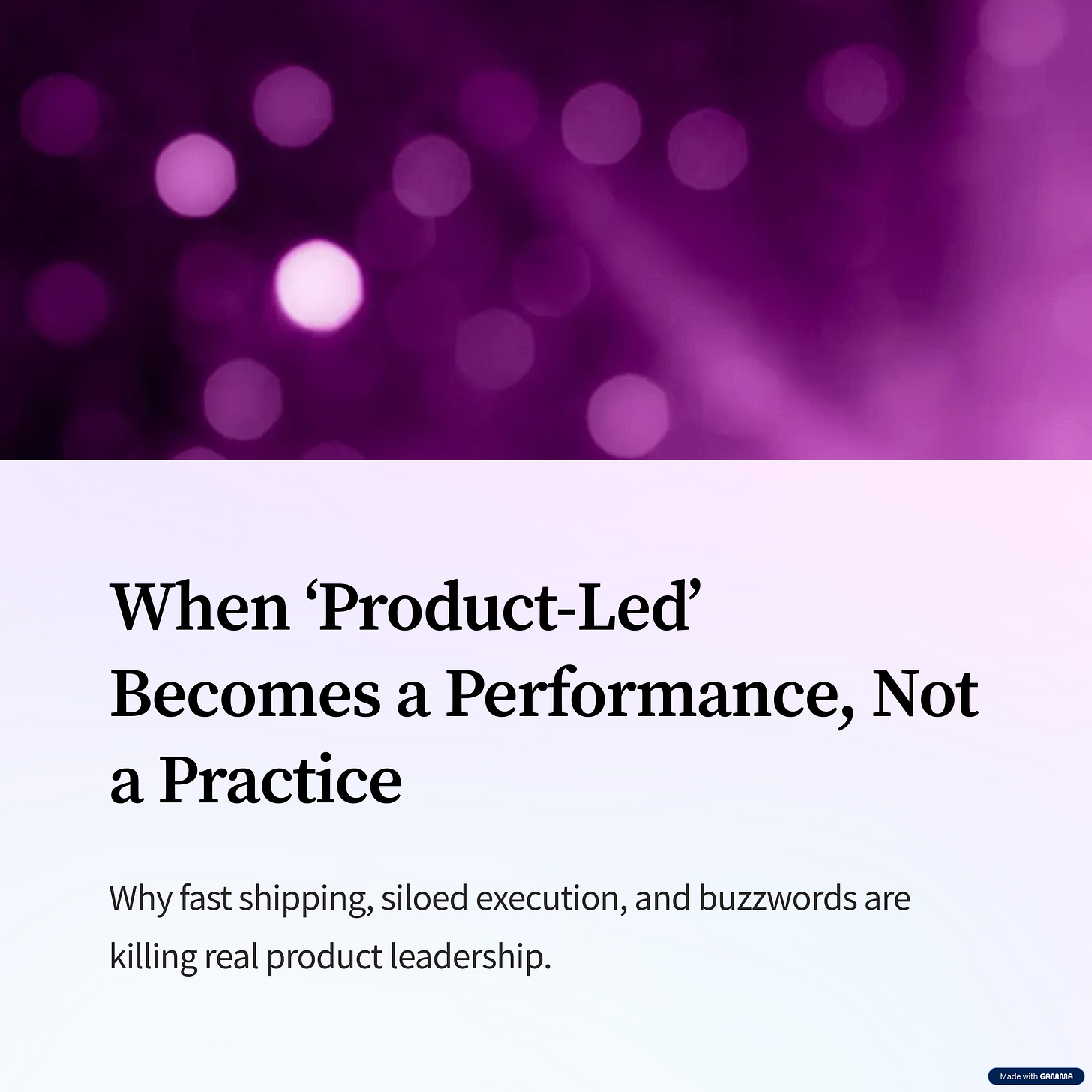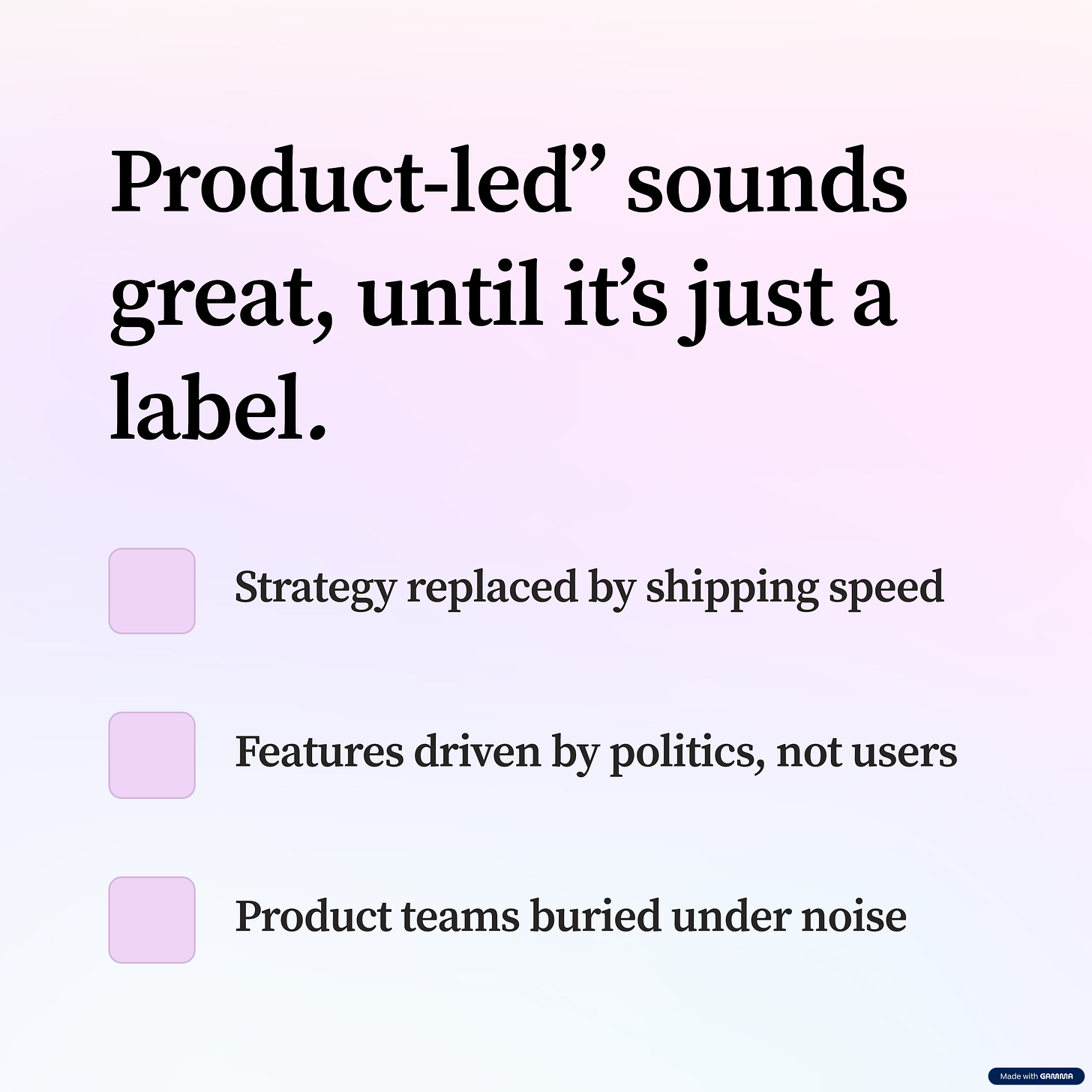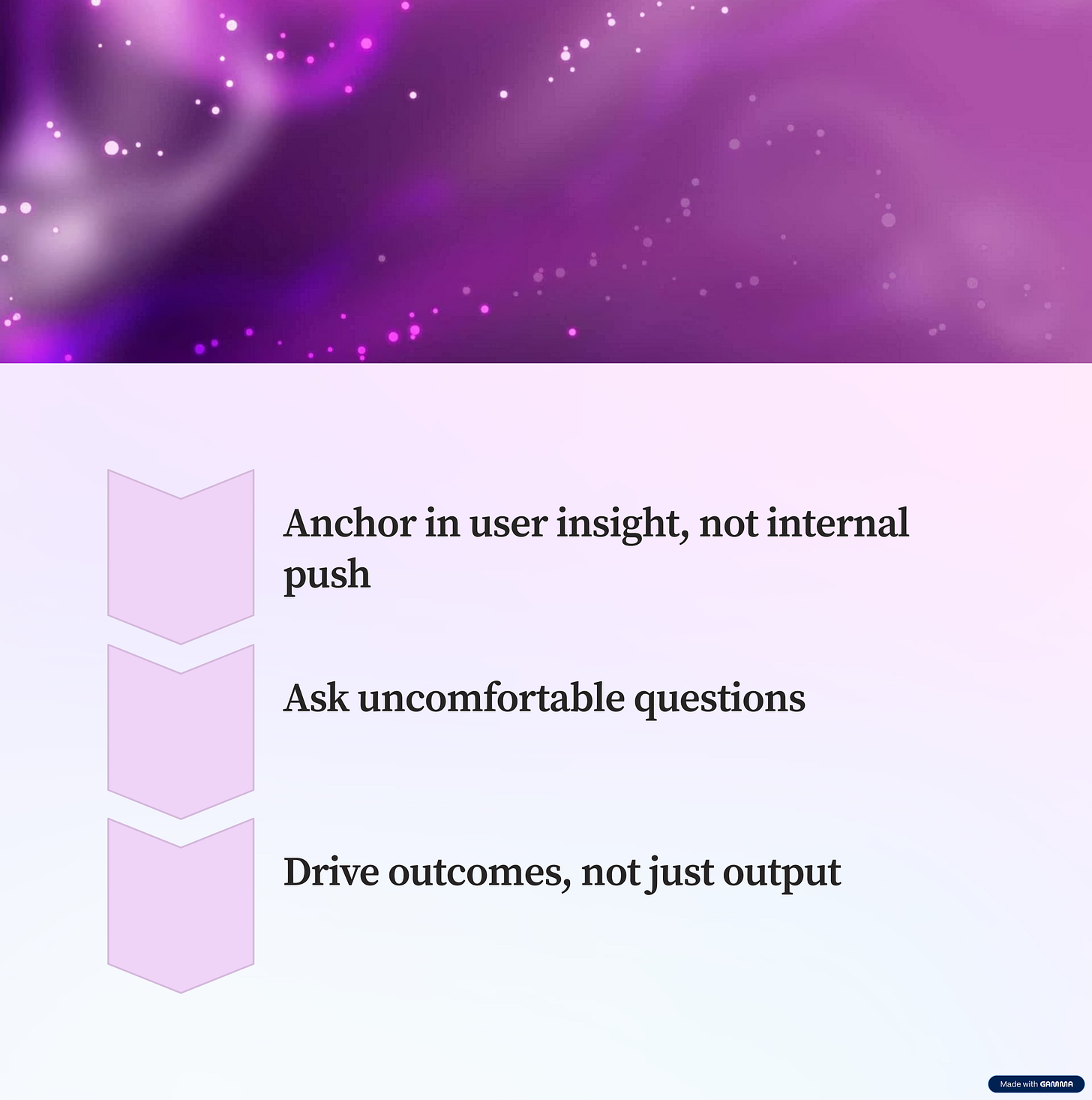When “Product-Led” becomes a performance, not a practice
A closer look at why fast shipping, internal noise, and feature obsession are killing real product leadership.
You’ve heard the phrase.
“Just make the product so good it sells itself.”
It sounds great in theory - empowering, even visionary. But in the real world? It often falls flat. Because what we call product-led growth has become a feel-good slogan rather than a strategic reality.
Over the last few years, I’ve seen teams chase the product-led dream only to find themselves stuck in execution chaos, with the user voice barely audible under the noise of internal politics, sales pressure, and stakeholder timelines.
This piece isn’t meant to tear down the philosophy - but to ask:
Have we lost the plot on what product leadership is supposed to mean?
How “Product-Led” became a buzzword
Let’s rewind.
The original premise of product-led growth was powerful: let the product be the growth engine. Let users experience so much value that they organically convert, retain, and refer.
But somewhere along the way, it got diluted. “Product-led” became:
A label slapped onto a landing page to impress investors
A shield to avoid building a go-to-market strategy
A way to cut corners on customer education or sales support
And suddenly, product-led became product-buried - under silos, scope creep, and competing agendas.
When execution overwhelms strategy
Let’s talk about what I see on the ground:
PMs turned into delivery managers
Roadmaps shaped more by OKRs than user needs
Backlogs that grow faster than customer understanding
Teams optimising for velocity over value
You know what’s missing in all of this?
Thinking.
Not hustle. Not alignment meetings. Not sprint burn-downs.
Actual space to think.
Somewhere, product lost its role as a thinking function. And without that, you don’t get meaningful growth - you just get motion.
What real product leadership looks like
The best product leaders I’ve worked with aren’t the ones who ship the most features. They’re the ones who:
Protect the why behind every decision
Anchor teams in real user problems, not internal agendas
Say “no” to more things than they say “yes” to
Bring clarity to complexity, without ego
They’re not chasing outputs. They’re focused on outcomes.
And when outcomes don’t materialise, they’re brave enough to shut down what’s not working - no matter how shiny or politically safe it looks.
The rooms where product dies
Here’s what those rooms often sound like:
“Marketing already promised this.”
“Sales needs this to close Q4.”
“Engineering said we have to build something.”
“We’ll figure out the value prop after we ship.”
I’ve been in those rooms. I’ve seen product managers lose their seat at the table, not because they weren’t capable - but because the org never treated product as a strategic partner to begin with.
So what happens?
You get:
Features no one uses
Funnels that leak everywhere
“Growth hacks” applied to products that lack fit
Teams working hard, delivering fast - and going nowhere
What needs to change
So if product-led growth isn’t the enemy - what is?
It’s how we’re practicing it.
Here’s what I believe we need to bring back:
1. Strategy before shipping
Roadmaps shouldn’t start with “what can we build?” They should start with “what are we solving?”
2. User pull over org push
Features should respond to real user behaviour, not internal politics or executive assumptions.
3. Clarity as a core skill
PMs need permission to ask the uncomfortable questions. What problem are we solving? For whom? Why now?
4. Less tech theater, more value discovery
Let’s stop fine-tuning the funnel on a product no one loves. Go deeper into value. Explore the hard “whys.”
How I help teams shift gears
I’ve worked with teams stuck in reactive cycles - shipping faster, burning out faster, and wondering why growth is plateauing.
What I’ve learned is this:
You don’t need more output.
You need more clarity.
That’s where I come in - helping organisations move from:
Feature factories ➝ outcome engines
Delivery timelines ➝ problem framing
Internal pressure ➝ user insight loops
And that shift? It doesn’t require more hustle. It requires better questions.
Final thoughts
Product-led growth can work, but only when product is actually leading.
Not firefighting.
Not following orders.
Not sprinting toward noise.
If your product team feels more like a delivery service than a strategic function, it’s time to rethink what leadership really means in your org.
Let’s not turn product into a performance. Let’s make it a practice again.
Thanks for reading.
If this resonated - I’d love to hear your experiences. What’s worked (or not) in your org? Drop a comment or forward this to someone who’s also navigating the noise.
If you're building something and want product to actually lead, reach out. My inbox is open.
Hey, I also write newsletter on LinkedIn. Feel free to subscribe to The Strategy Spark
Hi, I drive Innovation, Strategy & Growth Through Product Leadership. In case if you're looking for a product leader who challenges the status quo, fosters innovation, and delivers tangible business value, let’s connect
Until next post,
Sanghamitra







